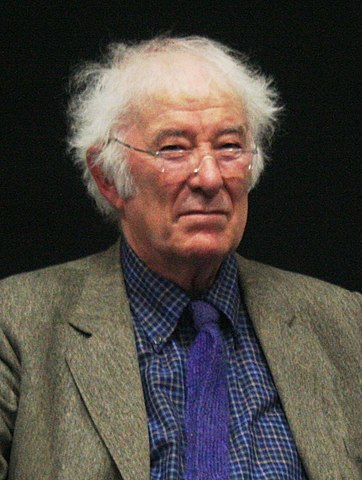
Seamus Heaney
Exploring the Works of Seamus Heaney
Seamus Heaney was one of the most celebrated poets of the 20th century. Born in Northern Ireland in 1939, Heaney went on to become a literary giant, winning numerous awards and accolades for his work before his death in 2013.
Death Of A Naturalist
One of Heaney’s most well-known works is his collection of poems entitled Death of a Naturalist, which was published in 1966. The collection explores themes of childhood, memory, and nature, and is considered by many to be a masterpiece of modern poetry. In the title poem, Heaney reflects on his childhood experiences of collecting frogspawn and watching tadpoles grow, before ultimately coming to the realisation that these creatures will one day die.
The poem is divided into two parts. The first part explores the speaker’s childhood fascination with nature and his keen observations of the natural world. The speaker describes collecting frogspawn from the “flax-dam” each spring and watching it grow into tadpoles. Heaney’s descriptions are vivid and evocative, with images of “green and heavy-headed flax,” “dragonflies,” “spotted butterflies,” and “warm thick slobber / Of frogspawn that grew like clotted water / In the shade of the banks.”
However, the tone of the poem changes in the second part, which is darker and more somber. The speaker describes a day when the “angry frogs / Invaded the flax-dam,” which is depicted as a terrifying event. Heaney’s use of alliteration and repetition emphasizes the frogs’ violent and chaotic behaviour, which ultimately leads the speaker to “sicken” and “run” away. The poem can be interpreted as a metaphor for the relationship between humans and nature. The natural world, represented by the frogs and the flax-dam, is initially portrayed as a source of wonder and joy, with the speaker eagerly collecting the frogspawn each year. However, human intervention, represented by the fields “rank / With cowdung in the grass,” disrupts the delicate balance of nature, causing the frogs to become aggressive and dangerous. The speaker’s fear and disgust suggest that the consequences of human action on the environment can be harmful and even destructive.
Moreover, the poem can also be interpreted as a reflection on the inevitability of change and the loss of innocence. The speaker’s childhood fascination with nature is contrasted with the adult realisation that the natural world is not always idyllic and benign. The title, “Death of a Naturalist,” can be seen as a metaphor for the speaker’s loss of innocence and the end of his childhood fascination with the natural world.
Beowulf “New Verse” Translation
Another notable work by Seamus Heaney is his own “new verse” translation of the epic poem Beowulf, which he published in 1999. The translation was praised for its faithful adherence to the original text by many (though not all), being largely successful in capturing the spirit and emotion of the story. Heaney’s translation is also notable for its use of alliteration and rhythm, which mirror the style of the original poem.
Themes
Throughout his career, Seamus Heaney wrote poetry that explored themes of history, nature, and life, often drawing on his own experiences growing up in Northern Ireland. He was known for his ability to evoke a sense of place and a connection to the natural world, while also delving into the complexities of human emotion and the impact of historical events on individuals and communities.
Seamus Heaney was a poet whose work continues to captivate. His ability to evoke powerful emotions and create vivid imagery has earned him a place in Irish literary history.